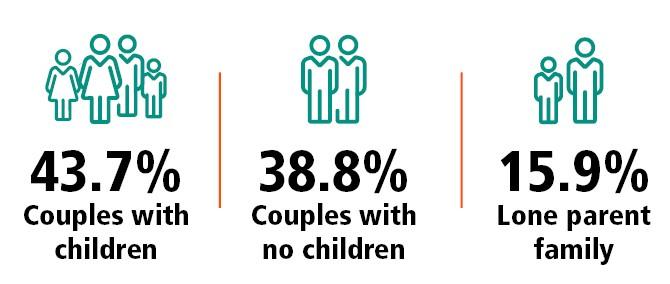Australian families
Image

Description
Other family composition represents 1.6 per cent of all families.
Source: Family composition (FMCF)
Includes information on relationships in household and family
8,747,135 people were married, 2,168,351 people were in a de facto relationship and 7,863,327 people were not married.

Other family composition represents 1.6 per cent of all families.
Source: Family composition (FMCF)
Articles and information papers that related to this topic include:
Learn how Census data helps community groups, businesses and governments make important decisions.
The questions from the 2021 Census are output into variables. To see descriptions of the variables, including data use considerations, relevant to this topic see the 2021 Census dictionary: Household and families.
Other relevant data downloads can be found on the following pages:
To access more 2021 Census data, see Search Census data or to build your own data sets, see Census data tools.
Explore other ABS data: